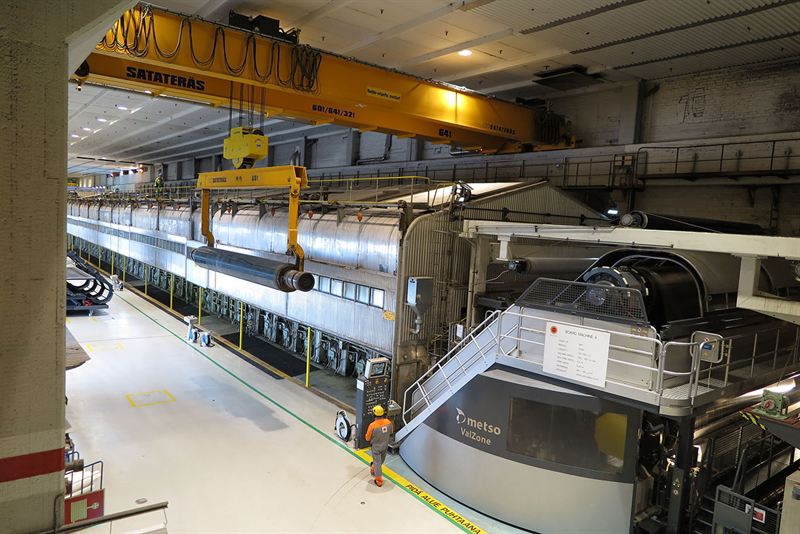
Products
Test & Measurement
Stora Enso Imatra upgrades web inspection
November 2, 2016 By Cindy Macdonald
 The new upgraded Procemex cameras have a significantly higher resolution
The new upgraded Procemex cameras have a significantly higher resolution Stora Enso Imatra Mills has implemented the Procemex web inspection and web monitoring system. The system helps Stora Enso to better investigate the root causes of web breaks, reduce the number of breaks and increase production efficiency.
Stora Enso Imatra Mills is the largest manufacturer of liquid packaging board in the world. Consumer packaging board used in contact with food and liquids must meet strict quality requirements set for food safety.
For several years, systems supplied by Procemex have been used in Stora Enso’s board machine 4 (BM4) to indicate any defects in board quality and to reduce web breaks. In March 2016, Stora Enso Imatra Mills made a system modernization investment to improve the quality of food packaging board and increase the efficiency of the board machine.
“We compared three different suppliers and ended up with Procemex, first of all, because we have had positive experiences with the previous system and, secondly, because we were able to upgrade the previous system – without needing to acquire a completely new one,” explains Riku Suurnäkki, production manager for BM4.
“Both web break and web inspection/defect detection systems are critical elements in order to be able to operate these machines: web inspection in terms of the final cleanliness and the web break system in terms of production efficiency. If we encounter any problems with efficiency, the web break system allows us to identify the root cause of breaks, enabling us to resolve, or even eliminate, the problems.”
Stora Enso Imatra Mills defined new locations for cameras, together with machine operators, and, now, cameras indicate the locations where pulp starts to pile up. “Of course, it is essential to listen to users,” Suurnäkki says.
“The new system became a necessity after we identified that we need to improve the classification of defects and the usability of the system. The previous system was unable to reliably classify a certain common defect, and there were situations in which defects in board ended up in our plastic coating,” says Suurnäkki.
The new upgraded Procemex cameras have a significantly higher resolution, defects are now classified more closely, the detection of defects is now more visual and the system is easier to configure for each user.
“The experience we have had so far indicate that the detection of defects is now much more visual than in the previous system, and the classification of defects has improved. Operators have already given us direct positive feedback, saying that the image quality is on a completely different level and, therefore, there are fewer web breaks,” Riku Suurnäkki says.
“The new system improved overall reliability. We acquired new PCs and upgraded our cameras,” says Vesa Koskinen, system specialist at Efora, who is responsible for the maintenance of the BM4 system. “These Procemex pinhole cameras are excellent, and they practically require no cleaning. The pinhole cameras are in challenging locations, where pulp keeps flying every which way, but they are easy to keep clean. The new Procemex cameras offer an HD quality, the images they produce are on a whole different level, and lighting has been improved by using new Procemex LEDs. These new lights are much easier to control than the old ones.”
Stora Enso is using the Procemex remote reporting system, which offers preventive information, for example, about system performance, camera image quality, the operation of IT hardware and backups – it is a maintenance tool. The system produces monthly reports, creating comprehensive information about maintenance and alerting when various tasks are needed.
Print this page